Shark is the general name for animals of the order Carcharoderma, and about 500 different species have evolved so far. The smallest shark is the pygmy shark, which is only about 17 centimeters long, while the largest shark is the whale shark, which is over 12 meters or even longer. The sharks that ordinary people are familiar with are usually those "beautiful" images of deep-sea kings. However, different types of sharks look very different, and some strange-looking sharks are also quite distinctive.
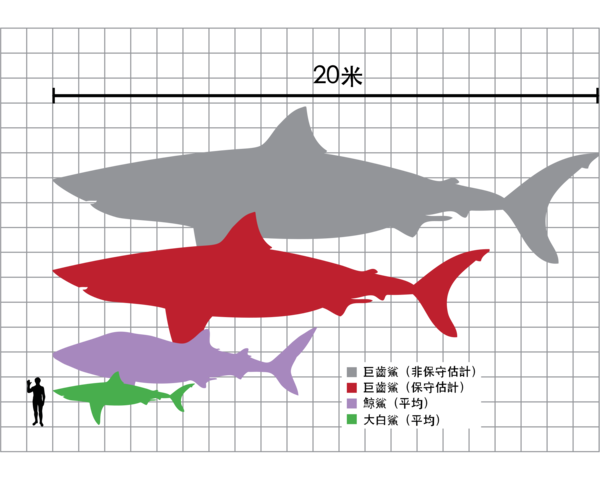
Megalodonand Whale Shark, Great white shark, human size comparison
There are many weird-looking shark species in the world, including goblin sharks, thoracic sharks, hammerhead sharks, frilled sharks, fox-shaped thresher sharks, saw sharks, Milaka hawksbill sharks, etc. These sharks present unique characteristics in appearance, such as strange shapes and strange appearances, which leave a deep impression on people. Let’s get to know these amazing sharks and explore their unique appearance and ecological characteristics.
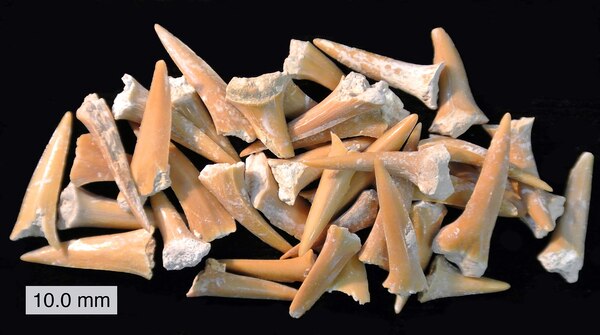
From the Cretaceous Shark Teeth Fossils
1. Goblin Shark (the body is pink and looks like a goblin)
The Goblin shark, also known as the European sharpnose shark or the devil shark, is one of the ten most bizarre shark species in the ocean and is often included in lists of shark wonders.

The European sharpnose shark has lasted for 125 million years, with the earliest record dating back to 1898. Their distribution Around the worldtemperateandtropical's waters, from the Pacific's AustraliaTo Atlantic Ocean TheGulf of Mexico. They were first discovered inJapanese waters. Mainly inhabit deep sea areas where sunlight cannot reach, usually living in waters 200 meters deep.
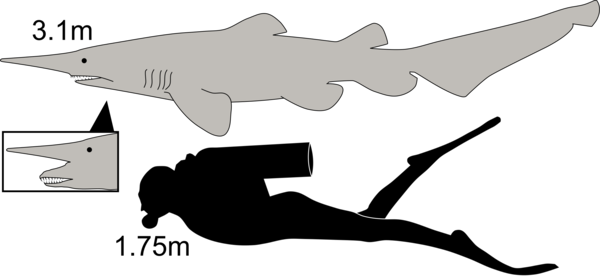
The bodies of these sharks are pink, which is extremely rare in the shark world, due to the translucent nature of their skin, which allows their blood vessels to show through, giving a pinkish visual effect. Ordinary sharks may have a more prominent snout, but few have a snout as long as the European sharpnose shark, especially a long sword-like snout. In a 3-meter-long shark, the snout can be as long as Up to half a meter. What’s even more peculiar is that the swordnose shark has a retractable mouth, and its ugly appearance is very similar to the goblins in European mythology, so it is also nicknamed the goblin shark, adding to their unique and mysterious charm.
2. Pectoral Shark (dorsal fin looks like an anvil)
The thoracic spine shark is also known as the thoracic spine shark or the toothback shark. They lived in the mud about 36 million years ago. Late Basinian to early Carboniferous period. its fossilsFound inAsia,EuropeandNorth America. The closest living relative to the thoracic shark is the chimaera .
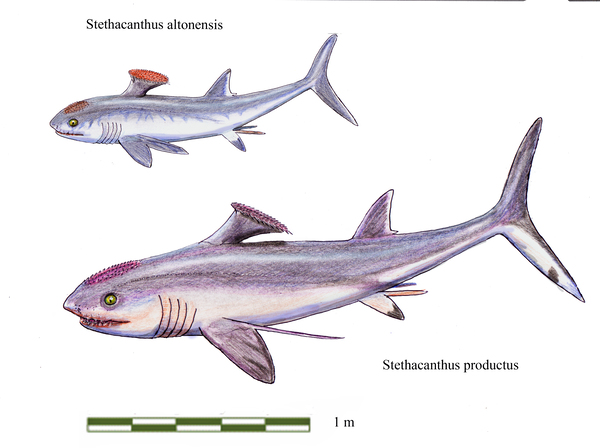
The pectoral shark is one of the most bizarre sharks in the world. This shark was about 70 centimeters long and looked similar to today's sharks. The most striking feature is the unique dorsal fin on their back, which is shaped like an anvil and stands straight on the back of the shark. The tops of these dorsal fins are covered with rough, jagged scales, giving them a grotesque appearance.
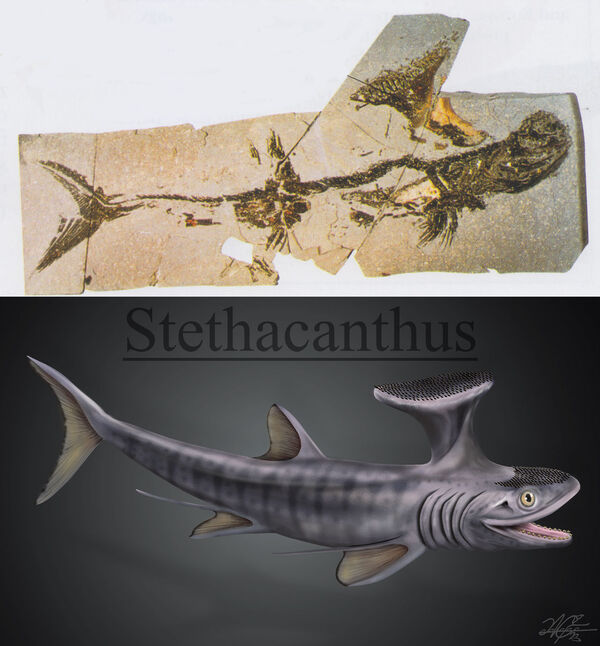
Interestingly, this strange dorsal fin is only observed in male pectoral sharks, so some researchers speculate that these dorsal fins may be used for courtship or self-defense purposes.
3. Hammerhead Shark (Head looks like a hammerhead)
The hammerhead shark is another weird-looking shark. Its body length is generally about 1 meter, and large hammerhead sharks can even reach more than 3 meters and weigh more than 150 kilograms. The shape of the head of this shark is unusually special. It is thought that the head may have some kind of rudder function to help enhance its maneuverability; and the two nostrils are widely separated. This feature makes the hammerhead shark Easier to identify smells.
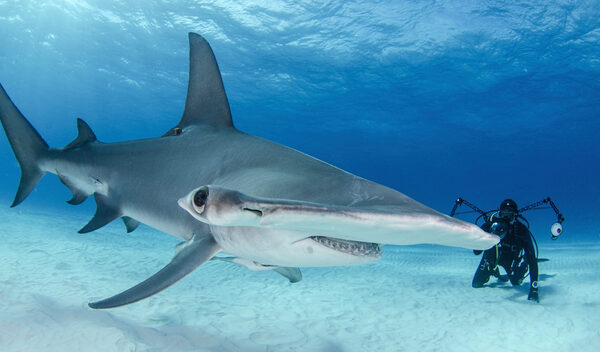
According to research, the hammerhead shark evolved its unique hammer-shaped head about 50 million years ago. However, scientists have made various speculations about this unique head shape. For example, the question of what benefits it has to the hammerhead shark has not yet been solved. Complete answer. The hammer-like structure on the head of the hammerhead shark may increase the distance between the olfactory sensors, which may help the hammerhead shark to more accurately capture prey that is farther away.
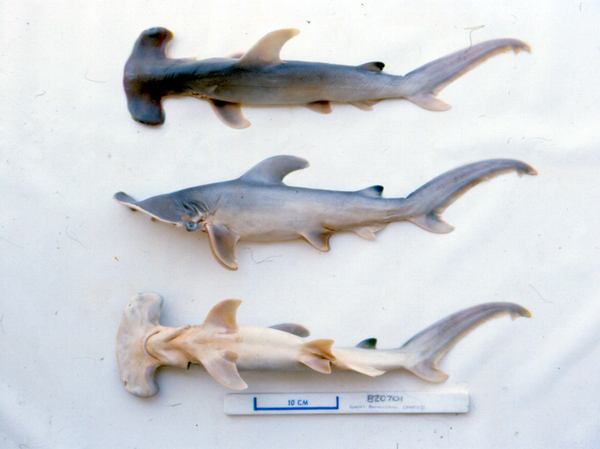
A great hammerhead shark embryo is connected to its mother through the placenta during gestation.
4. Frilled shark (looks like an eel)
The frilled shark, also known as the frilled shark, is listed as one of the ten weirdest sharks. This shark has a primitive body structure and is known as a "living fossil". Its appearance is more similar to eels than to most modern sharks. Frilled sharks are famous for their unusual tooth arrangement. There are about 300 triangular teeth in the mouth of this shark, distributed in 27 rows, filling the entire mouth.
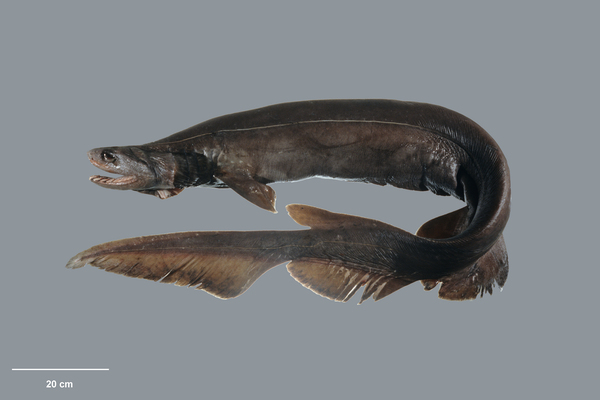
In addition, they have six gill slits on each side of their body, and these gill slits are extended and folded, covering each other. Frilled sharks are very aggressive when hunting, but will not attack humans.
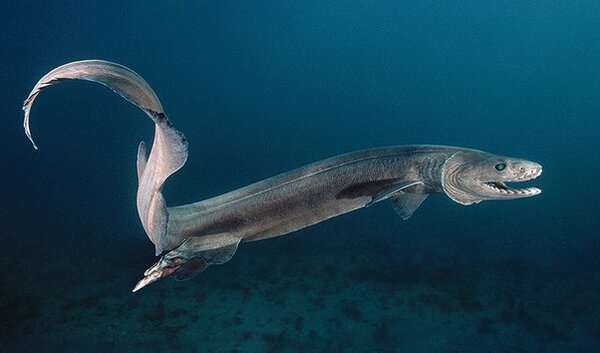
There are very few frilled sharks in existence, mainly in the Atlantic Oceanand found in some sporadic areas of the Pacific .
5. Fox-shaped thresher shark (extra long tail)
The thresher shark is considered one of the most bizarre sharks in the world, with a tail that can take up half of its body length. Especially for species like the fox-shaped thresher shark, its body length can easily exceed six meters, and its tail length can reach at least three meters. The Thresher Shark is famous for its elongated body shape, with a cylindrical body that is wide at the front and narrow at the back. The back is dark blue-green, as if it is smeared with a layer of blue-green ink.
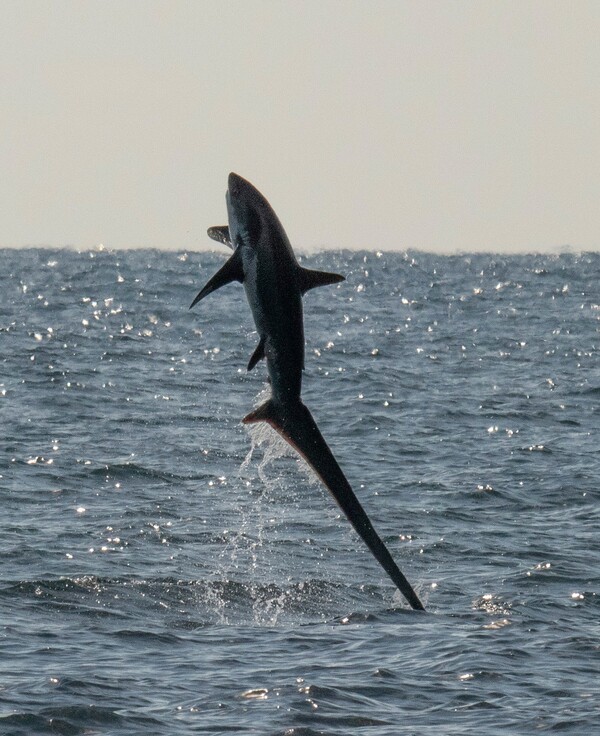
This body color, although not very conspicuous, provides excellent camouflage when stalking and hunting. Thresher sharks use their special long tail section to stun prey and sometimes even as a hypothetical strategy to protect themselves.
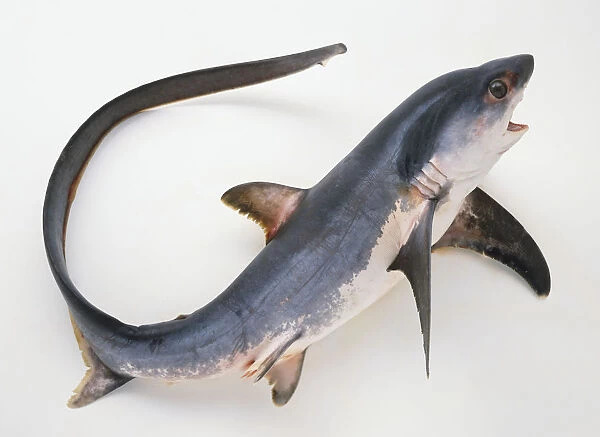
This fish is distributed in all oceans around the world TropicalSea areas. Water depth ranges from 0 to 550 meters.
6. Saw Shark (mouth like a saw)
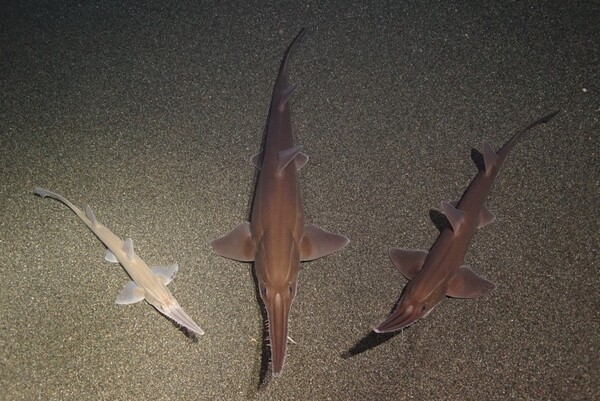
The sawshark is one of the strangest sharks in the deep sea. Its name comes from the "saw" it carries. This shark lives at the bottom of the sea and is ferocious. It uses its long mouth with "saws" to hunt prey. Although the sawshark looks similar to the sawsharks in appearance, it actually belongs to the shark family. Like most sharks, the sawsharks' gills are located on the sides of the neck, while the sawsharks' gills are located under the body. Despite these differences, the sawsharks and sawfishes have strikingly similar lifestyles: When marine life approaches, the sawsharks use their serrated mouths to suck in the remains of prey that have been torn apart by "saws."
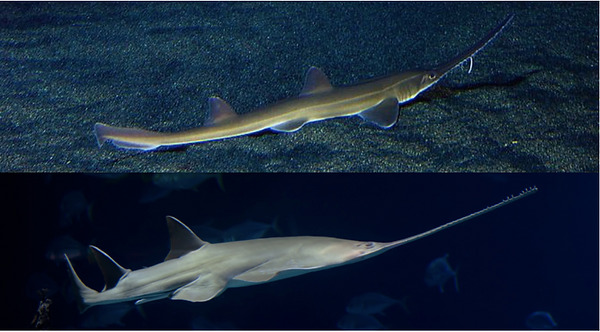
Saw sharksgenerally live 40 meters under the sea, feeds on benthic organisms and fish, distributed fromSouth Africa In the vast waters of Japan, the meat of saw sharks is edible,Japanese<span style= "color: #202122; --tt-darkmode-color: #A2A3A5;">Especially like to eat saw sharks.
7. Milaka Hawkshark (Shark with wings)
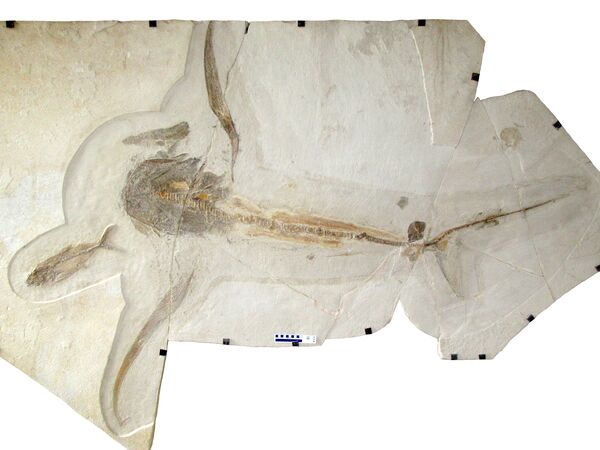
Of all the extinct sharks, I think the one with the most unique appearance has to be the Milaka hawkshark. Like all sharks and their relatives, the rays, the Milaka hawkshark has a soft-skeletal structure. Its body is streamlined, with traditional shark fins and tail, but its pectoral fins are unique. The Milaka hawkshark's elongated pectoral fins, more like the wings of a glider or flying creature, make it unique.
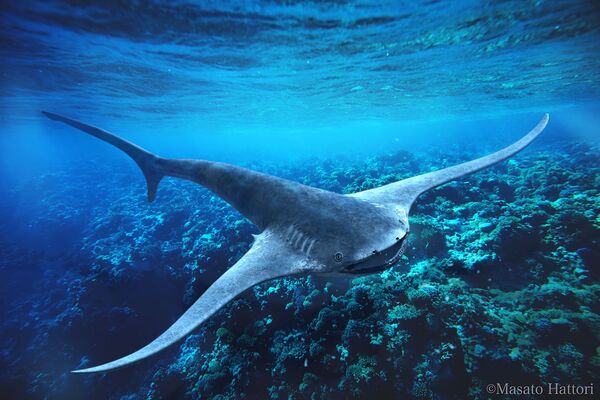
The holotype specimen of the Milaka Hawkshark is only 1.66 meters long, but its pectoral fins may reach 1.9 meters wide when fully extended. This exaggerated pectoral fin may have a wing-like balancing effect, like a pair of real wings.
8. Helicoprion shark (the teeth are rolled inward into a circular spiral)
Helicoprion, scientific name Helicoprion, is another strange-looking shark. Helico in its scientific name comes from the Greek word for "spiral", and Prion comes from "saw", so the combined meaning is "spiral saw". The name comes from its special tooth structure. The teeth of the Helicoprion shark are arranged from large to small, and are in the shape of an incurved annular spiral, like a milling cutter, with a strong cutting feel, which is daunting. However, the location of these teeth remains controversial and has been a source of concern since they were first discovered.
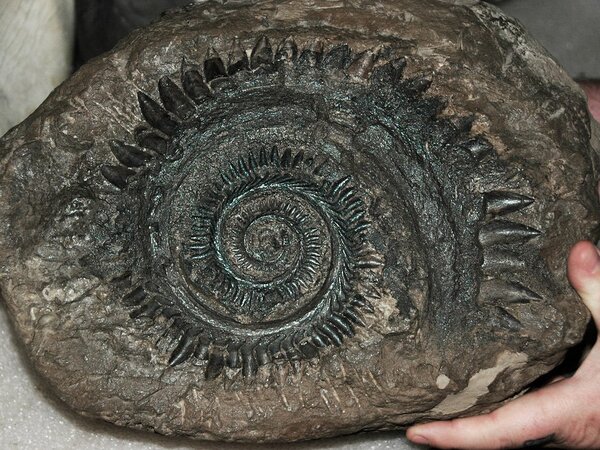
Helicoprion was discovered in 1899 by Russian paleontologist Alexander KarpinskyFirst discovered in the Ural Mountains.
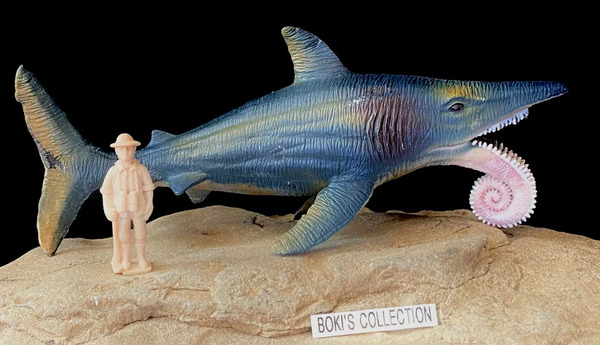
Since the Spinodon was first discovered, there has been ongoing debate over where exactly the teeth are located in the shark's mouth. This is because no anatomical structure similar to this kind of ring-shaped spiral teeth has been found in existing sharks or other vertebrates.
9. Pointed dogfish (shark body and pig face)
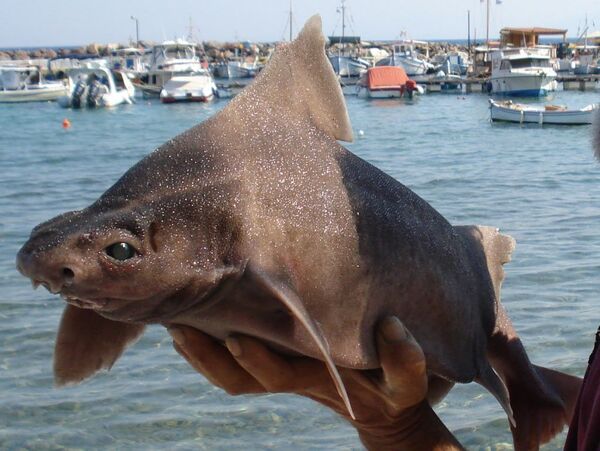
The sharp-backed dogfish (Oxynotus centrina) usually inhabits waters about 700 meters deep from the water, and its active range covers the eastern Atlantic and Mediterranean regions. Known for its broad, flat head and fat, blunt snout, this shark is a creature of great concern. The sharp-backed dogfish is included in the International Union for Conservation of Nature (IUCN) Red List of Threatened Species, so their sightings are very rare and caused a stir on social media in 2021.
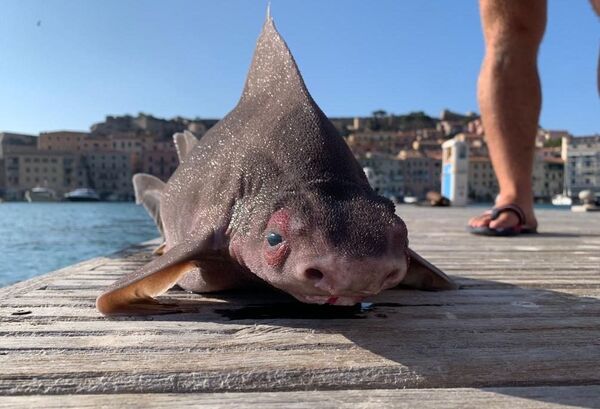
This strange shark-like creature has a face that is more like a pig, so it is also nicknamed the pig-faced shark. Over the years, dogfish have been accidentally caught in fishing nets, causing their populations to plummet.
10. Tiger Shark (Slow-moving small shark)
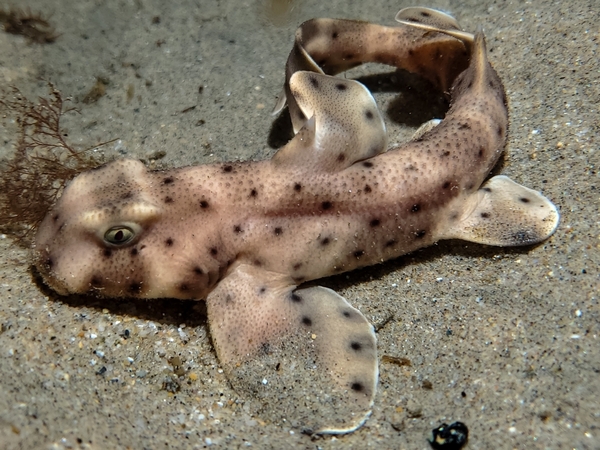
The Tiger Shark, also known as the Dogfish, is a small, quiet and unassuming shark. The surface of their dorsal fin is dark to light gray or brown, and the body and fins are covered with dark brown or black spots, generally less than one-third of the diameter of the eye; smaller spots are mainly concentrated on the head and tail. The Tiger Shark is known for its slow swimming. It is a nocturnal animal and likes to live alone. It often inhabits sandy shoals, reef caves and seaweed beds. Adult individuals return to their original habitat almost every day. They are carnivores and feed mainly on various seafloor invertebrates.
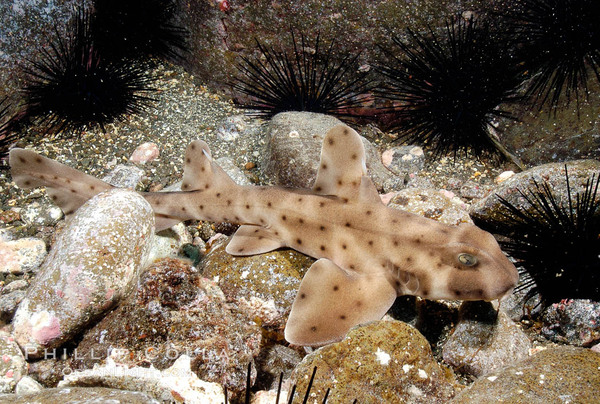
This fish is only found in USACaliforniaToGulf of California, MexicoThe waters between. Tiger sharks are harmless to humans and are well adapted to captivity. Currently, there is little fishing for this fish, and threats to its population are minimal.
SharkTips:
Because people in some areas like to eat sharks as food, especially shark fins. It is said that 100 million sharks are killed by humans every other year. Human consumption of shark fin soup is a major factor in the decline of shark populations.

Most sharks have been vilified by movie plots and become terrifying man-eating monsters. In fact, among hundreds of species of sharks, only a few have been reported to threaten humans and eat humans. Among all sharks, the great white shark,Tiger shark,Bull sharkThese three types are the most dangerous. Of course, not all sharks are very ferocious. For example, whale sharks are quite docile filter-feeding sharks. They pose no threat to humans at all, and divers can swim with them and even touch their bodies.
The sensory organs of sharks are very sensitive and can even smell the smell of blood several kilometers away. They have the ability to sense current and You can detect the weak bioelectricity emitted by the prey's muscles or heart hidden under the sand.
Sharks will not attack at will and have no interest in human blood, but you should still avoid playing in shark-infested waters, such as surfing The shape of the plate looks like a seal, which makes them want to prey.

Shark Movie
Jaws: The 1975 American Thriller Movie
Jaws 2
Shark Gang
Finding Nemo
Eight-clawed Shark
Deep Water
Soul Surfer
Jue Shark Island
Megalodon
shark beach
animal tags: shark
We created this article in conjunction with AI technology, then made sure it was fact-checked and edited by a Animals Top editor.